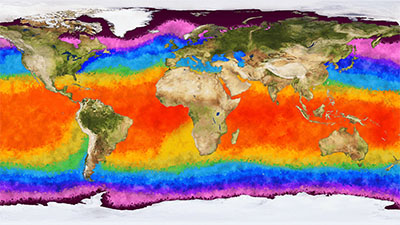Today, two of the most debated topics around the world are health care and climate change. Most often they are discussed in silos, however the health of people is intrinsically linked to the health of our planet.
We know that the global greenhouse gas (GHG) emission trajectory is expected to increase the frequency and intensity of some extreme weather events (i.e., heatwaves and tropical cyclones) as well as increase temperatures around the world. These factors will bring about a range of health risks and population impacts. Cases of heat-related fatalities and illnesses – such as heat stroke and respiratory illness – are projected to increase in the coming years, as are waterborne and vector borne illnesses, including Zika virus and West Nile virus, likely to place a strain on the health care infrastructure.
- In 2010, estimated worldwide emissions from human activities totaled nearly 46 billion metric tons of greenhouse gases (expressed as carbon dioxide equivalents) – a 35% increase from 1990. - [EPA]
- The majority of carbon dioxide emissions come from three regions of the world: Asia, Europe, and the United States, which together accounted for 88% of total global emissions in 2012. - [EPA]
- The health care sector’s climate footprint is equivalent to 4.4% of global net emissions. - [Health Care Without Harm]
Companies, including BD, are taking action not only to reduce GHG emissions from their operations, but also take steps to manage — and where possible mitigate — the potential risks and negative impacts of climate change across their value chain (such as supply chains).
BD is closing in on its 2020 sustainability goals, which include targets to reduce GHG emissions, but also focus on initiating climate resilience planning for its facilities. The company has made progress against these goals – reducing Scope 1 and 2 emissions by 75% 1 as of FY2018. BD is also in the process of developing Science Based Targets for GHG emission reductions and developing a comprehensive climate change resilience plan. The company is committed to disclosing details of its climate change management programs against the recommendations of the Task Force on Climate-related Financial Disclosures (TCFD).
However, much is uncertain about the future; we cannot be sure of how key factors reshaping the world (such as new technology, geo-political change, availability and cost of energy sources) will play out in the coming years. Scenario-based planning can be used to breakdown the uncertainty and enable more strategic and resilient choices in the present. When looking specifically at strategy for managing climate change impacts, the TCFD recommends that companies use scenario analysis in order to assess the resilience of a company’s strategy, taking into consideration different climate-related scenarios, including a 2˚C or lower scenario.
For the last year, BD has partnered with Business for Social Responsibility™ (BSR) – a global nonprofit organization that works with its network of more than 250 member companies to build a just and sustainable world – to advise on the company’s sustainability strategy. Working with BSR’s dedicated Sustainable Futures Lab and Climate unit, a team of BD employees representing various functions and businesses from across the company, co-created four scenarios which are a narrative depiction of different plausible futures for the operating context of the business.
Recently, these four scenarios were used to explore possible implications on the company’s key environmental, social and governance (ESG) issues, in order to identify strategies for enhancing resilience to a range of future climate possibilities. Outputs of this workshop will be used in refining the company’s sustainability strategy and next set of sustainability goals for 2030, as well as inform our disclosures around climate change management.
David Wei and Sarah L. Hill spoke about BD’s use of scenario analysis to manage climate risk at the 2019 BSR Conference in San Jose, CA last week.
Subscribe to receive BD blog alerts
